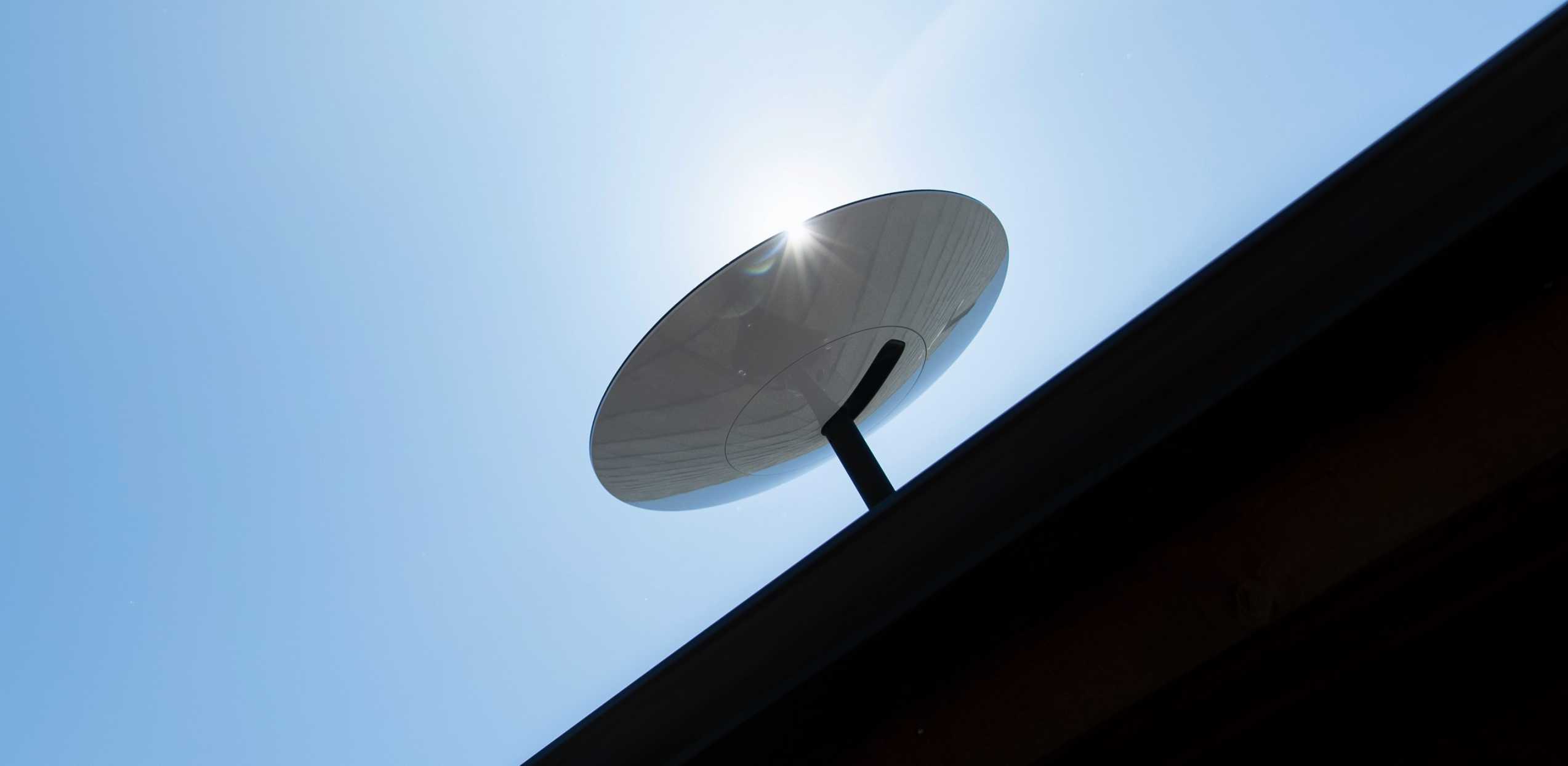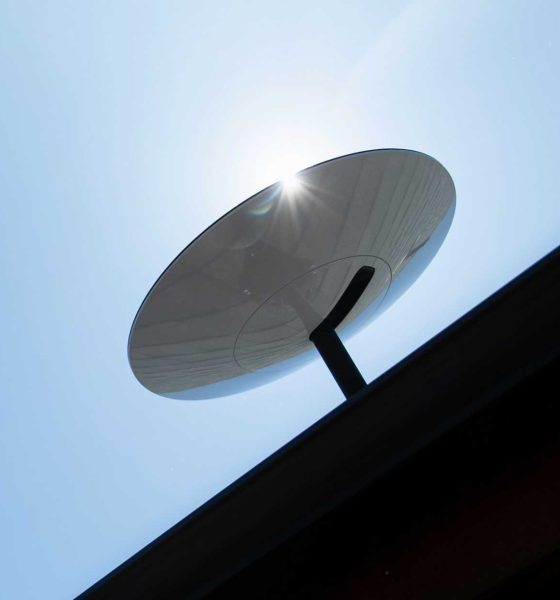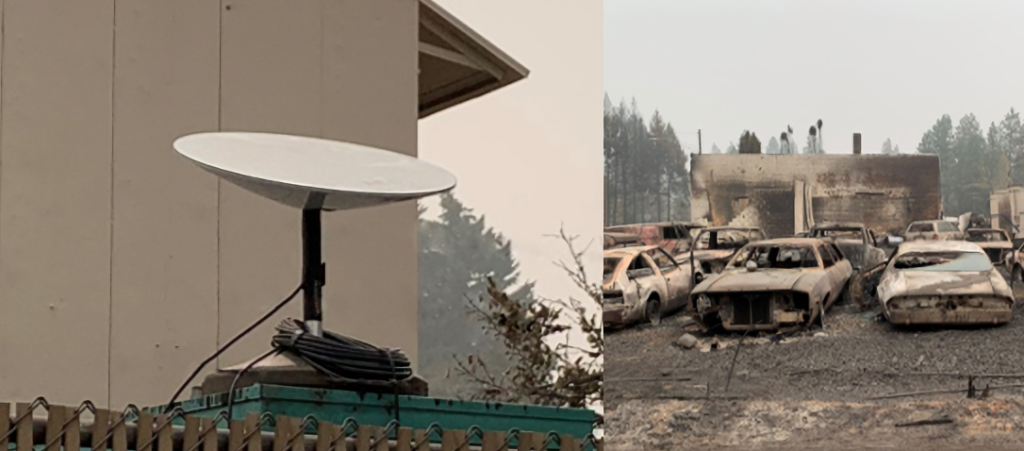

News
SpaceX Starlink aids Native American tribe: “It catapulted us into the 21st century”
Just a week after news broke that SpaceX was gifting Starlink internet service to Washington State’s Emergency Management department, the state has revealed SpaceX’s satellites are also benefitting the Native American Hoh Tribe.
On October 6th, a Falcon 9 rocket successfully launched SpaceX’s 12th batch of operational Starlink satellites and 13th dedicated mission overall. Once all 60 Starlink-12 satellites – and several prior batches – reach their operational 550 km (~340 mi) orbits, CEO Elon Musk says that SpaceX will be able to start rolling out “a fairly wide public beta in [the] northern US [and southern Canada].” Already, though, SpaceX has enough Starlink satellites in operational orbits to begin seriously testing the space-based internet network through a series of private betas.
While mostly centered around those within the general SpaceX circle (employees, families, company facilities, etc), the company has begun to highlight early trials with the kinds of customers and communities the constellation is optimal for. On September 28th, Washington’s Emergency Management division revealed that SpaceX had provided at least seven Starlink user terminals and (for now) free, unlimited internet service. In August, the division rapidly deployed the capability to at least one Washington region hit hard by summer wildfires, offering some level of connection to residents.
Interviewed by CNBC, Washington State Military Department emergency telecommunications leader Richard Hall heaped praise on SpaceX’s nascent satellite internet, noting that “I have never set up any tactical satellite equipment that has been as quick to set up, and anywhere near as reliable” and that “there’s really no comparison” between Starlink and alternatives.

Now, with SpaceX’s help and encouraged by the Washington State Military’s successes, the Washington State Department of Commerce’s Broadband Office has deployed Starlink terminals at the Hoh Tribe’s Reserve in Forks, WA. Remote and rural, Hoh Tribe Vice Chairman Melvinjohn Ashue described trying to work with the reservation’s existing communications infrastructure like “paddling up-river with a spoon” until Starlink’s introduction.
Ashue was at least as effusive as Hall, frankly stating that “it seemed like out of nowhere, SpaceX came up and just catapulted [the Hoh Tribe] into the 21st century.”
“And it seemed like out of nowhere SpaceX came up and just catapulted us into the 21st century. Our youth are able to do education online and participate in videos. Telehealth is no longer going to be an issue, as well as telemental health.
The Hoh Tribe is not alone. Many people in rural parts of [Washington] don’t have high-speed internet connectivity, but we’re changing that. We’re helping create partnerships and find resources so every community in our state can access this critical bridge to jobs, education, healthcare and so much more.”
– Hoh Tribe Vice Chairman Melvinjohn Ashue
Ultimately, Ashue’s praise helps illustrate the entire purpose of Starlink – at least at first. While given enough time and resources, SpaceX will assuredly serve Starlink internet to almost anyone on Earth, the company continues to reiterate that the constellation’s current goal is to help connect hundreds of millions of people around the world with poor service or no connectivity. Ashue notes that a high-quality internet connection can be used for online education, all kinds of digital healthcare services, jobs, and more, aside from the obvious benefits of simply being connected at all (entertainment, social enrichment, a near-infinite trove of knowledge, and more).
With a little luck, SpaceX’s Starlink program will continue to thrive and grow, ensuring that life-changing connectivity becomes the norm – rather than an exception – for emergency response services, rural Americans, Native Americans, and anyone else on Earth forced to settle with overpriced mediocrity or nothing at all.
Check out Teslarati’s Marketplace! We offer Tesla accessories, including for the Tesla Cybertruck and Tesla Model 3.

Elon Musk
Elon Musk and Tesla AI Director share insights after empty driver seat Robotaxi rides
The executives’ unoccupied tests hint at the rapid progress of Tesla’s unsupervised Robotaxi efforts.

Tesla CEO Elon Musk and AI Director Ashok Elluswamy celebrated Christmas Eve by sharing personal experiences with Robotaxi vehicles that had no safety monitor or occupant in the driver’s seat. Musk described the system’s “perfect driving” around Austin, while Elluswamy posted video from the back seat, calling it “an amazing experience.”
The executives’ unoccupied tests hint at the rapid progress of Tesla’s unsupervised Robotaxi efforts.
Elon and Ashok’s firsthand Robotaxi insights
Prior to Musk and the Tesla AI Director’s posts, sightings of unmanned Teslas navigating public roads were widely shared on social media. One such vehicle was spotted in Austin, Texas, which Elon Musk acknowleged by stating that “Testing is underway with no occupants in the car.”
Based on his Christmas Eve post, Musk seemed to have tested an unmanned Tesla himself. “A Tesla with no safety monitor in the car and me sitting in the passenger seat took me all around Austin on Sunday with perfect driving,” Musk wrote in his post.
Elluswamy responded with a 2-minute video showing himself in the rear of an unmanned Tesla. The video featured the vehicle’s empty front seats, as well as its smooth handling through real-world traffic. He captioned his video with the words, “It’s an amazing experience!”
Towards Unsupervised operations
During an xAI Hackathon earlier this month, Elon Musk mentioned that Tesla owed be removing Safety Monitors from its Robotaxis in Austin in just three weeks. “Unsupervised is pretty much solved at this point. So there will be Tesla Robotaxis operating in Austin with no one in them. Not even anyone in the passenger seat in about three weeks,” he said. Musk echoed similar estimates at the 2025 Annual Shareholder Meeting and the Q3 2025 earnings call.
Considering the insights that were posted Musk and Elluswamy, it does appear that Tesla is working hard towards operating its Robotaxis with no safety monitors. This is quite impressive considering that the service was launched just earlier this year.
Elon Musk
Starlink passes 9 million active customers just weeks after hitting 8 million
The milestone highlights the accelerating growth of Starlink, which has now been adding over 20,000 new users per day.

SpaceX’s Starlink satellite internet service has continued its rapid global expansion, surpassing 9 million active customers just weeks after crossing the 8 million mark.
The milestone highlights the accelerating growth of Starlink, which has now been adding over 20,000 new users per day.
9 million customers
In a post on X, SpaceX stated that Starlink now serves over 9 million active users across 155 countries, territories, and markets. The company reached 8 million customers in early November, meaning it added roughly 1 million subscribers in under seven weeks, or about 21,275 new users on average per day.
“Starlink is connecting more than 9M active customers with high-speed internet across 155 countries, territories, and many other markets,” Starlink wrote in a post on its official X account. SpaceX President Gwynne Shotwell also celebrated the milestone on X. “A huge thank you to all of our customers and congrats to the Starlink team for such an incredible product,” she wrote.
That growth rate reflects both rising demand for broadband in underserved regions and Starlink’s expanding satellite constellation, which now includes more than 9,000 low-Earth-orbit satellites designed to deliver high-speed, low-latency internet worldwide.
Starlink’s momentum
Starlink’s momentum has been building up. SpaceX reported 4.6 million Starlink customers in December 2024, followed by 7 million by August 2025, and 8 million customers in November. Independent data also suggests Starlink usage is rising sharply, with Cloudflare reporting that global web traffic from Starlink users more than doubled in 2025, as noted in an Insider report.
Starlink’s momentum is increasingly tied to SpaceX’s broader financial outlook. Elon Musk has said the satellite network is “by far” the company’s largest revenue driver, and reports suggest SpaceX may be positioning itself for an initial public offering as soon as next year, with valuations estimated as high as $1.5 trillion. Musk has also suggested in the past that Starlink could have its own IPO in the future.
News
NVIDIA Director of Robotics: Tesla FSD v14 is the first AI to pass the “Physical Turing Test”
After testing FSD v14, Fan stated that his experience with FSD felt magical at first, but it soon started to feel like a routine.

NVIDIA Director of Robotics Jim Fan has praised Tesla’s Full Self-Driving (Supervised) v14 as the first AI to pass what he described as a “Physical Turing Test.”
After testing FSD v14, Fan stated that his experience with FSD felt magical at first, but it soon started to feel like a routine. And just like smartphones today, removing it now would “actively hurt.”
Jim Fan’s hands-on FSD v14 impressions
Fan, a leading researcher in embodied AI who is currently solving Physical AI at NVIDIA and spearheading the company’s Project GR00T initiative, noted that he actually was late to the Tesla game. He was, however, one of the first to try out FSD v14.
“I was very late to own a Tesla but among the earliest to try out FSD v14. It’s perhaps the first time I experience an AI that passes the Physical Turing Test: after a long day at work, you press a button, lay back, and couldn’t tell if a neural net or a human drove you home,” Fan wrote in a post on X.
Fan added: “Despite knowing exactly how robot learning works, I still find it magical watching the steering wheel turn by itself. First it feels surreal, next it becomes routine. Then, like the smartphone, taking it away actively hurts. This is how humanity gets rewired and glued to god-like technologies.”
The Physical Turing Test
The original Turing Test was conceived by Alan Turing in 1950, and it was aimed at determining if a machine could exhibit behavior that is equivalent to or indistinguishable from a human. By focusing on text-based conversations, the original Turing Test set a high bar for natural language processing and machine learning.
This test has been passed by today’s large language models. However, the capability to converse in a humanlike manner is a completely different challenge from performing real-world problem-solving or physical interactions. Thus, Fan introduced the Physical Turing Test, which challenges AI systems to demonstrate intelligence through physical actions.
Based on Fan’s comments, Tesla has demonstrated these intelligent physical actions with FSD v14. Elon Musk agreed with the NVIDIA executive, stating in a post on X that with FSD v14, “you can sense the sentience maturing.” Musk also praised Tesla AI, calling it the best “real-world AI” today.








